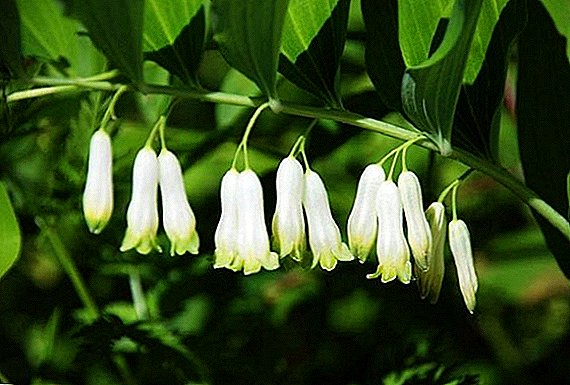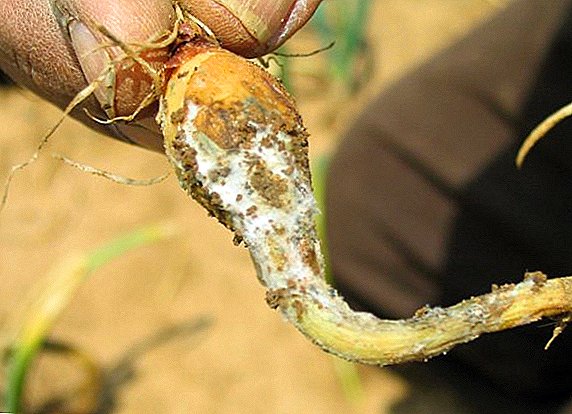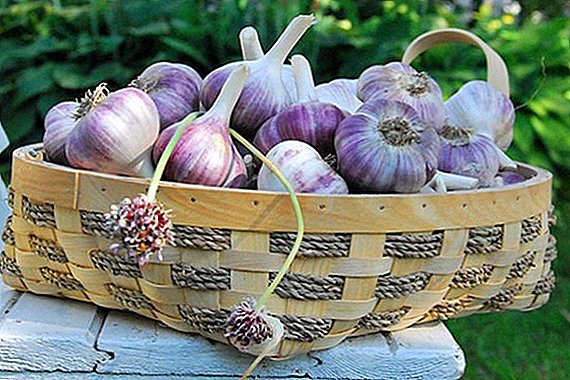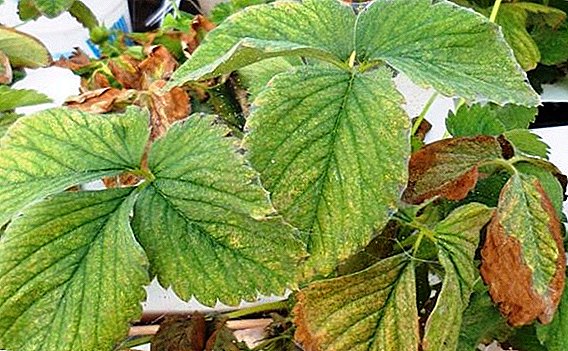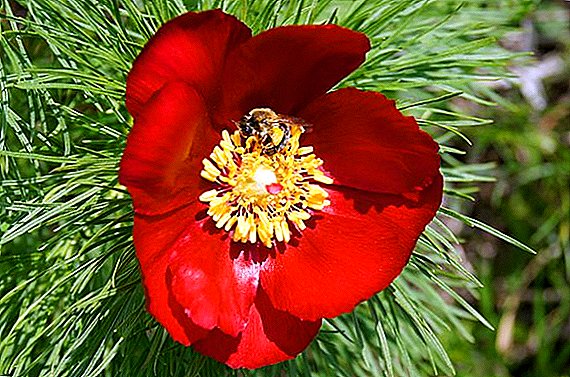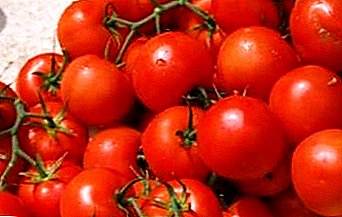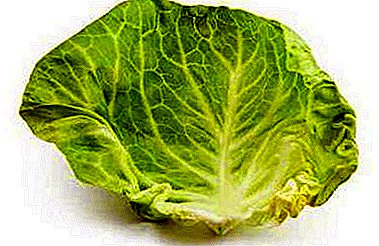
Cabbage leaf - an inexpensive and effective tool in the fight against various diseases. It has an anesthetic, tonic, anti-inflammatory effect and has been used in traditional medicine since time immemorial.
Cabbage not only has good taste, but is also very useful for the human body. It can be used not only inside, but also to use cabbage leaves as an external agent. In more detail about what is the beneficial effect of cabbage leaves, what trace elements they contain and how to use it is described in detail in this article.
What kind of cabbage is used for medicinal purposes?
There are many types of cabbage, but the most widely distributed head. Cabbage - biennial plant belonging to the family cabbage, or cruciferous. Differs large juicy leaves, which are used mainly in food.
In addition to cooking, cabbage (mainly white cabbage) is widely used in traditional medicine for both internal and external use. This is due to the presence in the composition of a wide range of beneficial vitamins, and availability.
Chemical composition
The composition of the white cabbage includes:
- carbohydrates (sucrose, fructose, glucose);
- carotenoids (organic pigments that color plants in red, yellow and orange);
- Rodanides (salts);
- thioglycoside progontrin.
The special value of cabbage lies in a diverse set of vitamins and elements, such as:
- vitamin C;
- thiamine;
- riboflavin;
- acids: nicotinic, folic, folic, pantogenic;
- mineral salts of potassium, sodium, magnesium, iron, calcium;
- trace elements: tin, lead, silver, copper, iodine, etc.
Reference! 16 amino acids are found in cabbage. Due to its rich chemical composition, cabbage has taken an important place among the medicinal remedies of traditional medicine.
A photo
Next you can see the photo of green leaves of cabbage:




Benefit and harm
Cabbage leaves are very good for health. Fiber contained in the fibers helps to remove toxins from the body, lowers cholesterol, cleans blood vessels and has a strong diuretic effect, eliminating puffiness. Thanks to vitamin U, cabbage leaf is effective in the prevention and treatment of peptic ulcer.
Important! In the treatment of ulcers cabbage leaf is used only in boiled form.
Tartronic acid, which is rich in cabbage, contributes to the process of losing weight by reducing the fat layer, by preventing the conversion of carbohydrates into fats. In addition to all of the above, cabbage leaf is effective for heartburn, diabetes, gallstone disease, etc.
The harmful manifestations of the properties of cabbage leaves include:
- Decreased sperm production in men with frequent consumption of cabbage for food.
- Harm at a peptic ulcer at a late stage.
- Negative effect in diseases of the thyroid gland.
Despite all the useful qualities of this vegetable, you should carefully examine the list of contraindications, before including it in your diet. From the use of cabbage leaves should be allergic.
How to use in traditional medicine?
Because of the rich vitamin composition, cabbage leaf is used to treat many diseases. Make compresses, use juice and fiber. External and internal use of cabbage is supported by many recipes of traditional medicine.
Step-by-step instruction
External use in the form of a compress for child and adult
Knowing the beneficial properties of cabbage, it is important to correctly use it for treatment:
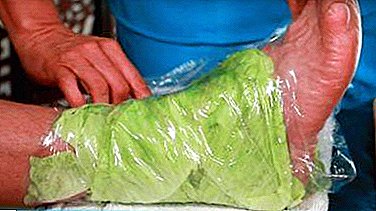 For the compress is taken cabbage late ripening, because early does not have all the healing properties.
For the compress is taken cabbage late ripening, because early does not have all the healing properties.- From the head of the sheet is separated and thoroughly washed with water. No need to remove streaks, because in them the most useful substances.
- The thickness of the compress should be at least 1 cm, so you can attach a few leaves.
- Upon reaching the required thickness, a film is placed on top of the leaves.
- Compress tightly applied to the sore spot and fixed with a bandage.
Usually the sheet is put on the night, but if there is no unpleasant smell, you can leave it for a day. Do not be afraid, if the leaves are painted in the color of blood or pus in the first application, for these secretions you can monitor the healing process. The treatment is considered successful if, as a result, the color remains natural.
From cough
It will take cabbage leaf and honey:
- The sheet is washed and briefly dipped in boiling water, after which it is smeared with honey on one side.
- With a smeared side, a sheet is applied in the chest or back area, leaving the heart area open.
- From above the compress is fixed by dense fabric.
Rarely, but an allergic reaction to honey can occur.
Remove edema on the lower limbs
- Compressing for edema will require the upper large leaves, which must be kneaded or repulsed with a hammer for meat in order to sap. You can remove the streaks, so as not to experience discomfort from the pressure on the skin.
- The finished leaves are superimposed on the legs and ankles, and fixed with a film (if the compress is short-term) or a bandage (if all night).
From bruises
 Mashed cabbage leaves are effective in eliminating bruises. They are applied to the damaged area and tightly fixed with an elastic bandage. For this procedure, dense, fresh and, preferably, young cabbage leaves are taken and crushed to form a slurry. It is the juice extracted from this vegetable that has a healing and cosmetic effect on the skin.
Mashed cabbage leaves are effective in eliminating bruises. They are applied to the damaged area and tightly fixed with an elastic bandage. For this procedure, dense, fresh and, preferably, young cabbage leaves are taken and crushed to form a slurry. It is the juice extracted from this vegetable that has a healing and cosmetic effect on the skin.
Compresses should be periodically changed, waiting for time before approaches. Helps with bruises and bruises, by breaking a stagnant hematoma.
From sore throat
When purulent sore throat has long been used succulent cabbage leaves. They overlap the tonsil area and change every 2 hours. It is believed that cabbage effectively pulls pus from the throat and relieves pain. You can enhance the effect and smear the throat with honey before overlaying the leaves. It is advisable to start the procedure in the early stages of the disease.
From mastopathy
Before you begin treatment, you must know for sure that mastopathy is the place to be. It is important to visit the doctor to confirm the diagnosis.
- The treatment uses medium cabbage leaves from the middle of the head. You can remove the streaks, and seals and pour juice.
- The leaves are applied to the chest for the whole day (or night) and fixed with a bra or a bandage.
With diathesis in children
Diathesis often occurs in young children and is treated with cabbage leaves. To do this, the leaves are boiled in milk with the addition of bran, then carefully crushed, and the resulting slurry is applied to the affected places for 10-15 minutes.
With arthrosis
Wrapping cabbage leaves is effective in treating arthrosis. It is important to keep the joints warm by using plastic woolen and wool.
Outwardly, like a face mask
Reference! Cabbage has great effectiveness when used as a mask for the face. Both fresh and sour, and white cabbage, and sea kale are suitable.
There are many recipes and all of them are aimed at eliminating skin problems (for example, acne, dryness, wrinkles). The most simple and effective recipes include the following:
 Well washed, fresh, chopped cabbage leaves are thoroughly mixed with 1 tablespoon of sour cream and 1 egg yolk.
Well washed, fresh, chopped cabbage leaves are thoroughly mixed with 1 tablespoon of sour cream and 1 egg yolk.- The resulting liquid green mass is applied to the skin of the face, excluding the area around the eyes. Leave the mask on the face should be no more than 30 minutes.
The procedure is carried out up to 3 times a week and, if necessary, the effect is fixed with a light cream for the face. The cream should be applied to dry skin, also bypassing the area around the eyes.
For oral administration
For ingestion, vegetable kvass, boil and make juice from it. Before use it is necessary to study contraindications. Cabbage decoction is used for the prevention and treatment of diseases such as:
- constipation;
- diabetes;
- gastritis;
- avitaminosis;
- flu and others
It is very easy to prepare the broth: 200 g of cabbage are poured with 4 cups of water and cooked over low heat for 15 minutes. Cabbage juice also contributes to the process of losing weight. It is necessary only three times a day, half an hour before meals, to drink half a glass of juice, which will dull the feeling of hunger, and will start the process of developing digestive enzymes.
How can the effectiveness of treatment be improved?
The effectiveness of treatment increases with the use of auxiliary ingredients, such as: honey, carrots, beets, apples, kefir, oil, salt, etc. Depending on the ailment, a specific recipe is used.
Possible side effects
The side effects of the use of cabbage leaves include:
- Bloating and flatulence, disruption of the bowels due to excessive consumption of vegetables or improper cooking decoction.
- Individual intolerance.
- Reaction to treatment for diseases incompatible with the use of cabbage (for example, pancreatitis).
In general, it is worth noting that cabbage is almost harmless with the right approach to its use. Cabbage is a unique vegetable that has found its use in various industries. Its healing properties have been proven for centuries, and its popularity does not fall due to its effectiveness and ease of use.


 For the compress is taken cabbage late ripening, because early does not have all the healing properties.
For the compress is taken cabbage late ripening, because early does not have all the healing properties. Well washed, fresh, chopped cabbage leaves are thoroughly mixed with 1 tablespoon of sour cream and 1 egg yolk.
Well washed, fresh, chopped cabbage leaves are thoroughly mixed with 1 tablespoon of sour cream and 1 egg yolk.
